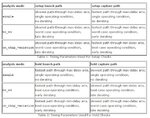owen_li
Full Member level 3

Hi.
I find bc-wc mode and ocv mode all use timing derate to model the pessimism.
So what is difference between the bc-wc mode and OCV mode in STA.
Thanks in advance.
I find bc-wc mode and ocv mode all use timing derate to model the pessimism.
So what is difference between the bc-wc mode and OCV mode in STA.
Thanks in advance.






